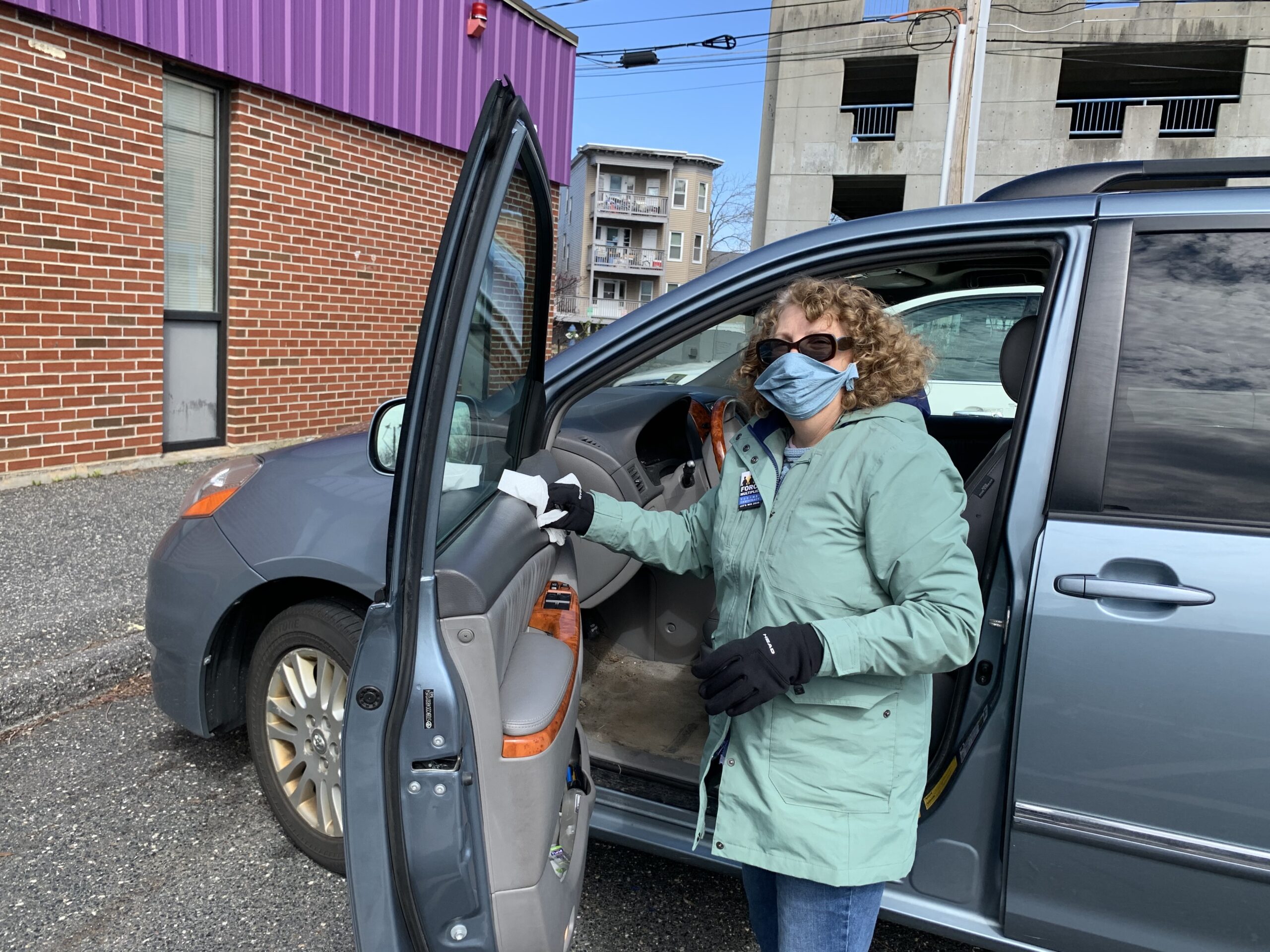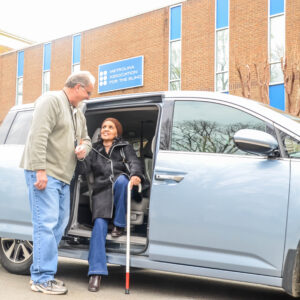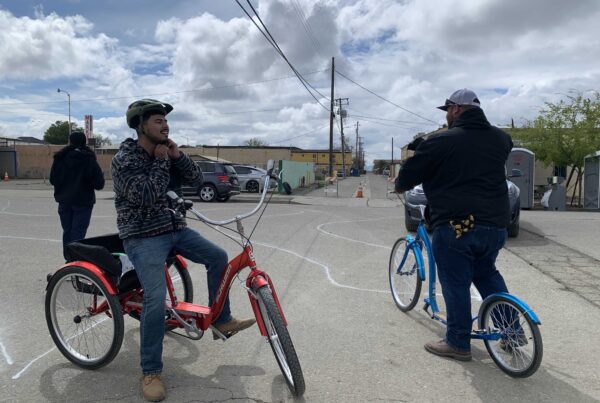Introduction
Volunteer-provided transportation is often organized by a local nonprofit or government agency who manage driver recruitment, screening, training, and scheduling. Success of these programs depends heavily on recruiting and retaining drivers to supply rides throughout the community. Over the past few decades, volunteer driver numbers have slowly dwindled, leading to gaps in services and canceled rides. Now, volunteer drivers are more in demand than ever.
Volunteer drivers dedicate their time to transporting riders, often in their personally owned vehicles, with “no compensation for services provided other than mileage reimbursement of actual expenses.” While this definition captures several characteristics of volunteer driving, the mileage reimbursement of actual expenses portion falls short in accounting for costs in time, money, or vehicle wear incurred by volunteer drivers to provide their service. Volunteer drivers are usually seniors, retired people, or part-time workers. They are people affiliated with local organizations or individuals involved in their community.
For many individuals, especially those in rural or low-density communities who lack other means of transportation, volunteer transportation programs act as a lifeline to accessing medical care, socialization opportunities, groceries, and other services integral to social determinants of health. They allow older adults and people with mobility limitations or behavioral conditions the opportunity to age in place and retain their independence, preventing isolation that could be detrimental to their health.
Despite the reliance on volunteer drivers to provide needed transportation services in their communities, many programs are experiencing difficulties recruiting and retaining volunteer drivers. Since the Covid-19 pandemic, volunteer transportation programs are seeing record low numbers of drivers amidst worries over cost reimbursement and taxable income issues.
In the Taxpayer Relief Act of 1997, Congress set the federal charitable reimbursement rate at 14 cents per mile. Over twenty years later, the rate has not changed despite gas more than tripling in price and costs of living continuing to rise. In addition, volunteer drivers are required to pay income tax on reimbursement amounts that exceed 14 cents per mile. Due to current concerns over high gas prices, pandemic-related safety, and poor tax incentives, the number of volunteer drivers continues to decrease, leaving volunteer transportation programs in an unsustainable state.
To complicate things further, the introduction of transportation network companies such as Uber and Lyft have created confusion among insurance agents who neglect to distinguish the different status of for-profit drivers and volunteer drivers. This had led to insurance companies raising their prices and charging similar insurance rates to both for-hire and volunteer drivers, contributing to loss of volunteer drivers. Unlike commercial drivers who are covered by their organization’s primary commercial automobile policy, a volunteer driver’s personal insurance policy is often their first line of coverage in an incident that causes personal injury or property damage, leading them to deal directly with insurance agents and face higher rates.
Passing Volunteer Driver Legislation in Minnesota
The instability of volunteer transportation programs is a concern for many communities across the country that are projected to see increases in the aging and disability populations, prompting higher demand for ride services.
In Minnesota, around 2,000 volunteer drivers are an integral piece of the transportation system, providing around 168,000 rides a year to more than 77,000 individuals who cannot drive themselves. Groups like the Minnesota Volunteer Driver Coalition are acutely aware of the impact driver shortages are having on those who rely on these transportation services. The Volunteer Driver Coalition was founded in 2019 out of partnership between Minnesota Public Transit Association, Minnesota Association of Area Agencies on Aging, and the Live at Home Network. The group is composed of Minnesota nonprofit organizations and public agencies. Currently the Volunteer Driver Coalition is working to sustain and strengthen volunteer driver programs in the state of Minnesota because of the key role volunteer drivers play in supporting individual’s access to essential services.
After conducting technical discussions with Minnesota’s Department of Commerce, Department of Human Services, and Department of Revenue, the Volunteer Driver Coalition successfully lobbied the Minnesota Legislature to pass two bills into state law that would benefit a plethora of volunteer transportation programs and their drivers. The first measure clarifies the role of a volunteer driver in statute as distinctive from a transportation network company driver. The second creates a state income tax subtraction for volunteer drivers to reduce their tax liability in Minnesota. The Minnesota Department of Revenue manages these changes to the state Volunteer Mileage Reimbursement.
Why does this matter?
With the knowledge that reimbursement of 14 cents per mile is not enough to cover expenses associated with total miles traveled and vehicle use, some volunteer driver programs offer drivers the IRS standard mileage reimbursement rate (currently 62.5 cents per mile).
However, under federal code, drivers who receive upwards of 14 cents per mile need to pay taxes on the excess amount, as the rest is counted as income. This “additional income” poses a real concern for volunteer drivers relying on a fixed income (i.e. social security), as it has the ability to reduce the monthly payment amount received.
Additionally, the federal mileage reimbursement for volunteers makes no distinction among the types of volunteers and the nature of their service. The legislation groups volunteer drivers in the same category as other volunteers (i.e., church leaders, food pantry assistants, etc.). Volunteer drivers do not just donate their time; they donate the use of their vehicle and bear additional personal costs to ensure people can get essential services and live independently. This is something the Coalition hopes resonates with people.
Federal initiatives
Members of the Minnesota Volunteer Driver Coalition are committed to expanding the work accomplished at the state level to promote a more fair mileage reimbursement and eliminate barriers for volunteer drivers. The Coalition is now looking to make change at the national level, setting their attention on changing the federal charitable mileage reimbursement rate to match the standard business rate.
At the request of the Volunteer Driver Coalition and Minnesota Public Transit Association, Congressman Pete Stauber (R-MN-08) introduced the Volunteer Driver Tax Appreciation Act 2022, a bill which would increase the mileage rate for the charitable use of an automobile (14 cents per mile) to the standard business mileage rate for volunteer drivers who provide transportation to individuals on behalf of charitable organizations. The bill would also eliminate taxation of reimbursement up to the standard business rate.
However, Stauber’s bill isn’t the only Minnesota-led volunteer driver legislation looking for support in Congress. In July, U.S. Representative Angie Craig (D-MN-02) introduced the Tax Emergency Adjustment for Mileage Volunteers (TEAM Volunteers) Act, which looks to address the financial pressures placed on volunteer drivers by increasing the charitable mileage reimbursement rate from $0.14 to $0.625 per mile for a 2-year period. While both bills seek to confront poor reimbursement rates, Craig’s bill doesn’t make the reimbursement permanent or part of the IRS code, key factors that groups like the Volunteer Driver Coalition believe are critical to removing driver burden.
Remaining Challenges
While the Volunteer Driver Tax Appreciation Act of 2022 is a step forward, the coalition is aware of additional factors not addressed in the Stauber bill particularly in regard to no-load miles and Transportation Network Companies (TNC’s).
No-load miles, also known as deadhead miles, are not eligible for reimbursement. In other words, drivers only receive reimbursement for the miles in which their passengers are in the vehicle, not for the miles driven to pick them up or return from a drop off location. Exclusion of no-load miles in reimbursement is particularly challenging for drivers who operate in rural geographies and have to travel long distances for passenger pickups. In rural Minnesota, for example, transportation of non-drivers to doctors’ appointments can be located 30 to 60 miles from their homes.
Recently TNCs, such as Uber and Lyft, have established fuel surcharges on rides to lessen the burden of higher gas prices on drivers. Unfortunately, most volunteer driver organizations do not have the capacity to offer an additional reimbursement rate to cover rising fuel prices, leading drivers to absorb the cost themselves.
Both these issues remain on the Volunteer Driver Coalition’s radar and are part of the Coalition’s agenda to improve the conditions of volunteer drivers.
For more information on the Coalition’s advocacy efforts and involvement in volunteer driver legislation, please contact Sherry Munyon at [email protected] or visit http://volunteerdrivermn.org/get-involved/








